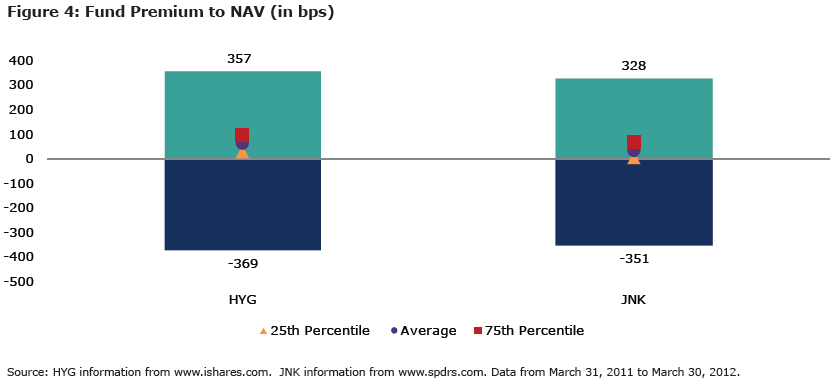Is The JNK ETF A Good Investment (JNK)
Post on: 23 Июнь, 2015 No Comment

If you haven’t being paying attention to what’s been happening on Wall Street, then let’s get the most obvious point out of the way right off the bat. Janus Capital’s Bill Gross recently stated the following to Bloomberg: “There is very little liquidity in the bond market, especially in high-yield debt .” Is the alarm in your head ringing yet?
Red Alert?
If you’re thinking about investing in (or trading) SPDR Barclays High Yield Bond ETF (JNK ), then there are several things you need to know about the high-yield bond market. One is is that the high yield bond market is often looked at as a leading indicator for what is going to happen in the stock market. (For more, see: Junk Bonds: Everything You Need to Know .)
For example, in 2000 and 2007, higher yields occurred prior to the dot.com crash and recent financial crisis. From 2011 until a few months ago, yields had been low, which was a positive indicator for stocks. However, yields have recently spiked. Is this setting the stage for a stock market crash in 2015?
Devil’s Advocate
Let’s play devil’s advocate and say that high yields aren’t a leading indicator for what’s going to transpire in the stock market. After all, you’re reading this because you want to read about bonds, not stocks. (For more, see: Will the High Times Continue in High Yield? )
Loading the player.
Sorry, but it’s still bad news. Oil is plunging, which likely relates to significantly reduced global demand and increased supply, the latter especially in the United States. SPDR Barclays High Yield Bond ETF is 17% energy exposure. Therefore, that 5.9% annual dividend yield shouldn’t look so appealing. Dividends don’t mean much if your position is suffering from consistent deprecation .
Another factor here is significant outflows from high yield funds, which have totaled as much as $2.7 billion over the past two weeks. (For more, see: Are High-Yield Bonds Too Risky? )
Adding fuel to the fire is that pundits on television are eager to spread the word about credit markets feeling a little frozen. They have no reason to lie about something bearish. Therefore, this is cause for concern. And even if they’re incorrect, with a medium like television, fear can spread rapidly. David Faber did provide a specific example in which Quincy Assets was unable to receive $90 million in financing.
If the credit markets freeze, then many of the oil companies that used financing for development and exploration (primarily related to shale) will be in trouble, and defaults aren’t out of the question. (For more, see: 4 High-Yielding Junk Bond ETFs .)
The Big Picture
The following is the type of economic environment when you want to invest in high yield bonds: Interest rates are increasing and the economy is improving. Do you envision that type of economic environment in the near future? It’s possible, but it’s not likely. The Federal Reserve has kept interest rates so low for so long for one simple reason: The economy isn’t growing at the pace necessary for sustainable growth.
Inflation expectations are currently back to 2009 levels. That being the case, where did low interest rates and quantitative easing get us? It provided false hope, increased wealth for those who could afford to invest, irresponsible spending, and a mountain of debt.
The Bottom Line
We are currently living in an economy where deflation is becoming a reality, even though it has been there for years (the Federal Reserve has been sweeping it under the rug). In this type of environment, and with oil falling, it would likely be unwise to invest in a high yield fund with 17% exposure to energy, despite the generous yield. However, please do your own research prior to making any investment decisions. (For more, see: Junk Is Starting to Look a Lot Less Junky .)
Dan Moskowitz does not own shares of any of the companies or ETFs named in this article.














